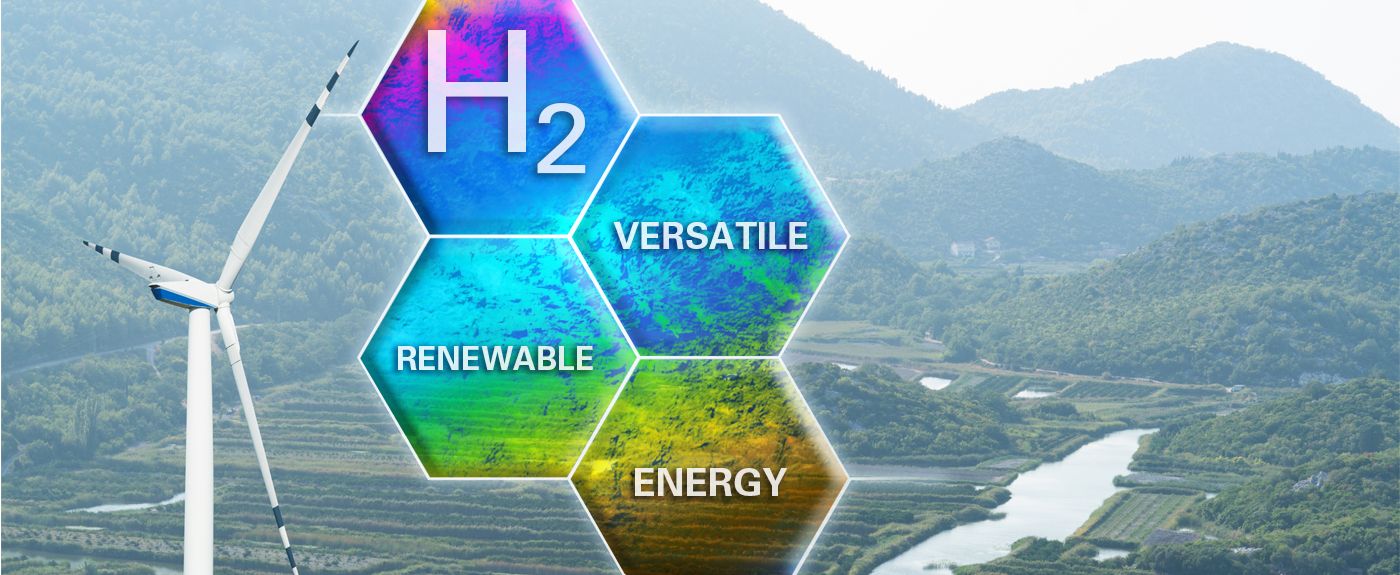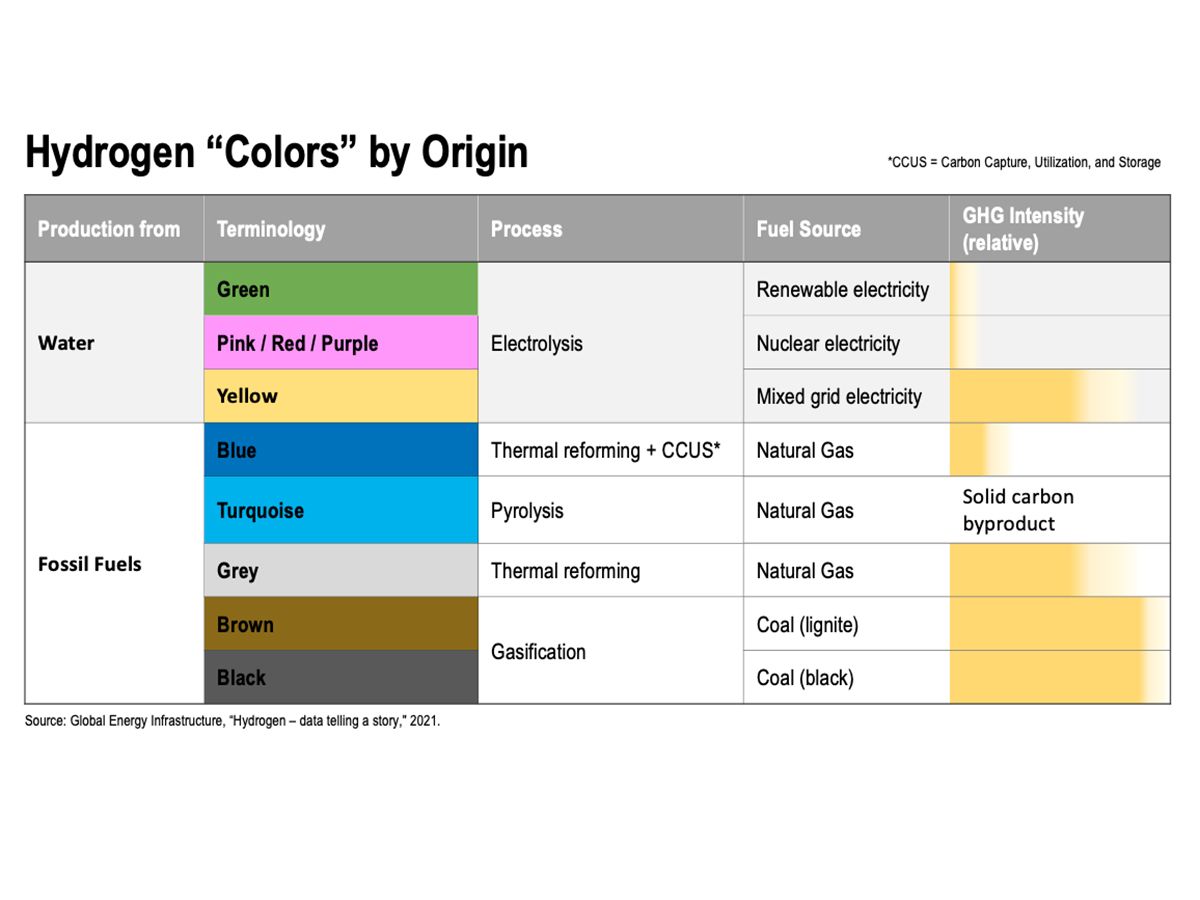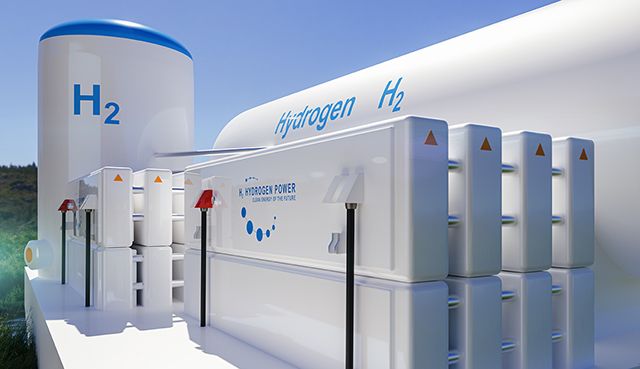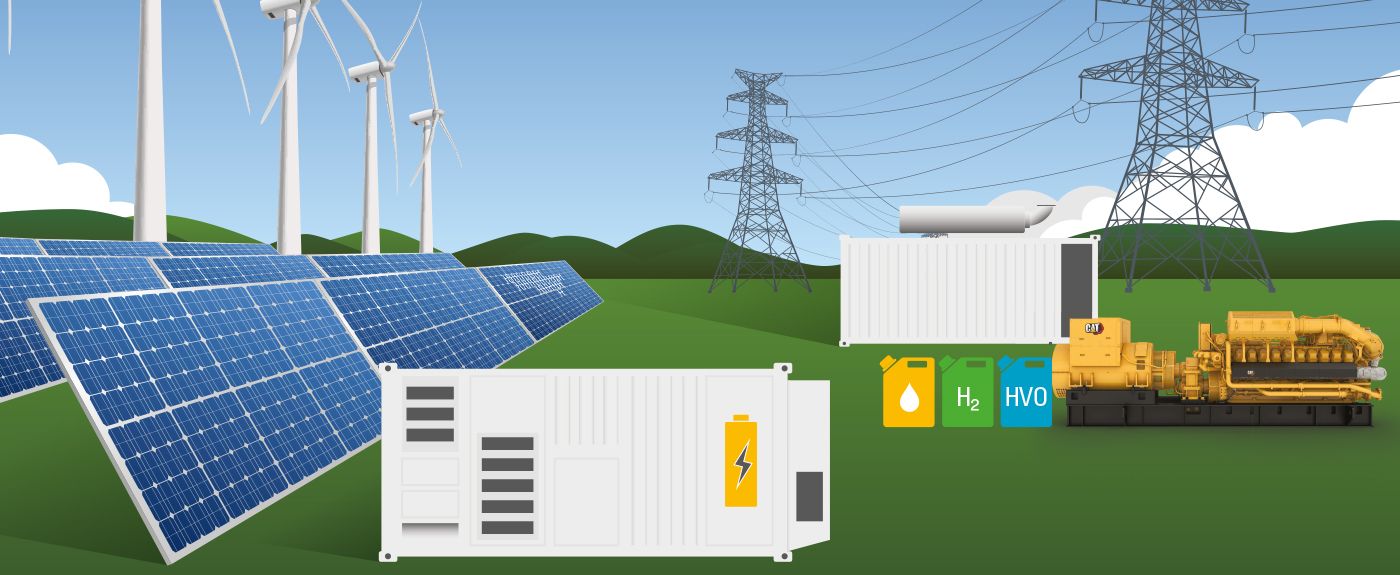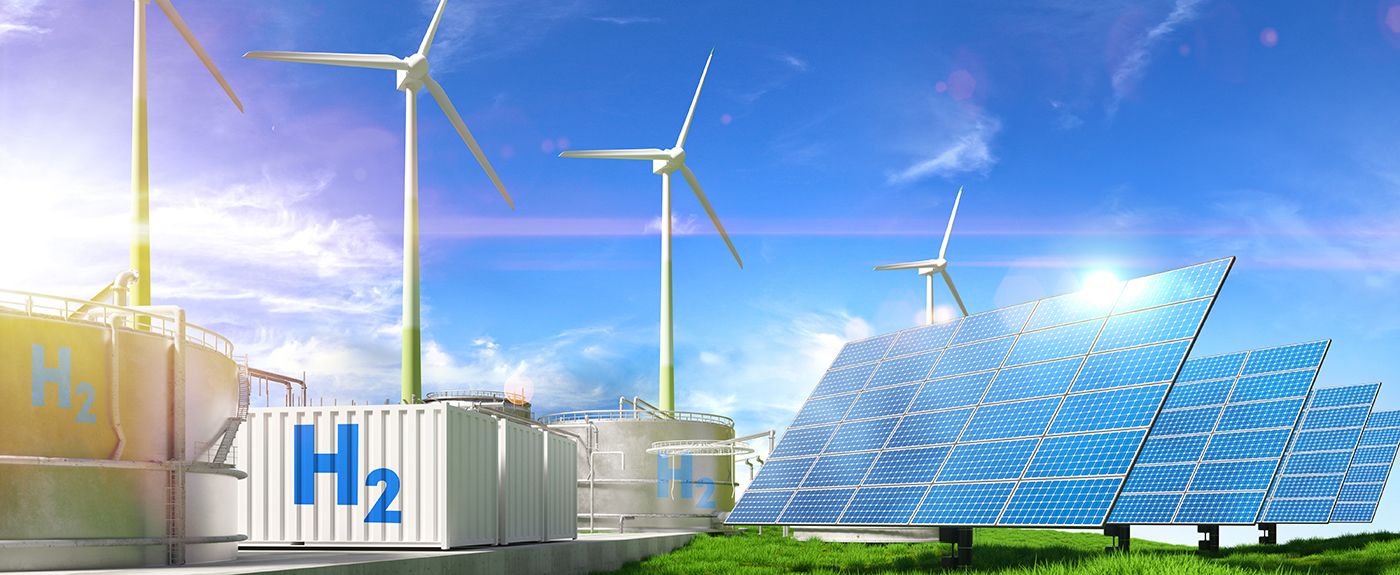

Sign In
Welcome! Sign In to personalize your Cat.com experience
If you already have an existing account with another Cat App, you can use the same account to sign in here
Register Now
One Account. All of Cat.
Your Caterpillar account is the single account you use to log in to select services and applications we offer. Shop for parts and machines online, manage your fleet, go mobile, and more.
Account Information
Site Settings
Security
Hydrogen’s True Colors: A Key to Defining Carbon Intensity
By Steven Parente, Hydrogen Infrastructure & Integration Specialist, Caterpillar Electric Power Division | Posted: May 2023
Here’s a riddle for you: What’s colorless but most often referred to by its colors?
The answer: hydrogen. Often referred to as a “clean-burning” fuel, because it generates near-zero carbon greenhouse gas emissions at the tailpipe, hydrogen is the most abundant chemical substance in the universe. It’s also colorless, odorless, and burns with a near-invisible flame. So why does nearly every Google search or news story about hydrogen turn up terms like “green,” “blue,” and even “pink”?
A rainbow of production processes
Hydrogen as a fuel source isn’t found freely in nature. It must be extracted from naturally occurring compounds, typically through energy-intensive processes. And though there are multiple ways to make hydrogen fuel — all resulting in the same molecular hydrogen — the lifecycle greenhouse gas intensity of each production method varies. Energy experts and engineers started labeling these processes by color to make it easier for the rest of us to understand the differences.
Whether this color designation makes it simpler is up for debate. There’s no universal standard for hydrogen color labeling, and different organizations and countries sometimes use different definitions. Still, if you’re considering hydrogen as a potential fuel source for your electric power needs, it’s good to have at least a basic understanding of the terminology. So, here’s a quick look at the most common “colors of hydrogen” and their meanings.
The cleanest H2: green hydrogen
Not surprisingly, green is the color chosen for the hydrogen production method, resulting in zero net greenhouse gas emissions. Green hydrogen is made by using electricity from renewable sources, like solar or wind power, to electrolyze water. Electrolysis is a chemical reaction that separates water molecules into their two components — hydrogen and oxygen — and nothing more. This type of production is costly, so only a small percentage of hydrogen is made this way.

The rest of the hydrogen spectrum
- When natural gas and steam react through a process called steam methane reforming, they create hydrogen — along with carbon dioxide. If that carbon dioxide is captured and sequestered, resulting in a significantly reduced amount of greenhouse gases reaching the atmosphere, the result is blue hydrogen. If those carbon gases are unabated, it’s called gray hydrogen instead.
- Another method to create hydrogen starts with coal instead of natural gas. This process, called gasification, also releases carbon dioxide into the atmosphere. That’s known as brown hydrogen (sometimes called “black”).
- Methane pyrolysis splits natural gas or biomethane into hydrogen and a solid form of carbon. If the thermal process used for pyrolysis comes from renewable sources — and the solid carbon byproduct is stored permanently — then you get turquoise hydrogen. Sometimes referred to as “cyan,” it can be considered a low-carbon or carbon-neutral fuel source.
- Two other production methods involve electrolysis (see green hydrogen above). When hydrogen is created directly from an electrolyzer that is powered from the grid and therefore has greenhouse gas intensity equivalent to the greenhouse gas intensity of the grid energy mix, it’s called yellow hydrogen. When it’s generated by nuclear power, it’s dubbed pink, red, or purple hydrogen. No carbon is produced in the latter process, but nuclear waste is a byproduct.
No black-and-white solution
Clear as mud? Don’t worry about remembering exactly what each color means. The key takeaway is that not all hydrogen is created equal, especially when looking at it from a carbon footprint and sustainability perspective. More companies are turning to sustainable solutions to help lower their carbon footprint. Renewable hydrogen and hydrogen blends are among several alternative fuels customers consider to achieve their sustainability goals. In fact, we already offer generator sets capable of operating on 100% hydrogen — including fully renewable green hydrogen. Here’s a look at our 35-plus years of hydrogen experience, products with hydrogen-blending capabilities, and other hydrogen-related projects currently underway.

Steven Parente
Hydrogen Infrastructure and Integration Specialist
Caterpillar Inc.
As the Hydrogen Infrastructure and Integration Specialist at Caterpillar, Steven Parente has responsibility for product definition and technical sales support of hydrogen infrastructure products. Furthermore, he leverages years of experience in hydrogen technologies to provide technical leadership for a diverse portfolio of hydrogen projects across the enterprise.
Steven has spent more than 16 years in the hydrogen industry where he has gained subject matter expertise in hydrogen production, compression, storage, and dispensing. He began his career as a process engineer, designing and commissioning steam methane reforming plants for hydrogen and syngas production. His accomplishments as process engineer include the development of a novel, compact hydrogen production system to provide a reliable, on-site production solution for small hydrogen consumers. He progressed through engineering management roles, leading increasingly larger engineering teams through engineering, procurement, and construction of hydrogen systems globally. As the hydrogen for mobility market rapidly evolved, he led a team in the development, testing, and deployment of hydrogen refueling systems designed to serve light and medium duty transportation sectors, primarily in California, China, and Europe.
Steven holds a bachelor's degree in chemical and biomolecular engineering and a master's degree in business administration, both from the Georgia Institute of Technology.
Hydrogen
Learn about how Caterpillar is continuing to invest in hydrogen technology to deliver more sustainable products to our electric power customers.

Related Stories
-
How Municipal Utilities Can Address Surging Power Demand
For many municipal utility managers I talk to, it’s getting tougher to continue providing the highest levels of reliability, service, and value. Customer preferences are changing. Some want 100% renewable power overnight; others simply care about cost. Other challenges are mounting, too: New technologies. Increased regulation. Workforce shortages. Budget constraints. And perhaps biggest of all, rising demand.
Learn More -
Act Now to Leverage CHP Tax Credits Up to 50%
The Inflation Reduction Act (IRA), signed into law in August 2022, provides nearly $400 billion in tax credits and incentives over a decade to promote climate change mitigation and stimulate clean energy development in the U.S. It’s the largest single investment in climate and energy in American history — and it includes the highest incentives ever provided by the federal government for combined heat and power (CHP) projects.
Learn More -
5 Steps to Sign-Off on a New Energy Solution
You’re a large energy consumer, maybe in healthcare, education, distribution or transportation. You’re facing pressure — internal, external or both — to increase your energy resiliency, lower your carbon emissions, reduce your energy costs, add capacity for expansion, or some combination of all four. You know you need to act (and soon), but you’re struggling with how to get started implementing a solution.
Learn More -
Is Your Organization a Good Fit for EaaS? And Is Your EaaS Partner a Good Fit for You?
Our EaaS team at Caterpillar has implemented solutions for all types of operations: from K-12 schools and grocery stores to industrial facilities. The concept — you purchase energy outcomes and turn ownership and upkeep of energy assets over to a third party — works for many organizations. How do you know if yours is one of them?
Learn More -
Demystifying the EaaS Model: Don’t Buy Power Products. Buy Energy Outcomes.
Software as a Service, or SaaS. Today, most applications — everything from Microsoft Office to Google Drive to Salesforce — are hosted by a third-party provider and made available via the web or a mobile app. You don’t need to install or configure anything on your computer, and the SaaS provider handles all maintenance, upgrades, and licensing. It’s more convenient for users and more affordable for businesses.
Learn More -
Distributed Energy Benefits and Grid Systems Integration
Our electric power system faces many challenges, and as the energy landscape evolves to address increased electrification, we will have even greater demand than ever before. Caterpillar is positioned to serve as a trusted partner with the technologies and expertise to provide alternatives to established energy sources and fuels that are reliable and cost effective.
Learn More -
Trends in the Energy Transition
When it comes to the ongoing efforts to decarbonize and reduce greenhouse gas (GHG) emissions, renewables are making up more and more of our sources of power generation, and we think this will continue—for many positive reasons. We have a lot of customers who are setting targets for Environmental, Social, and Governance (ESG) goals, aiming for improved carbon reduction.
Learn More
